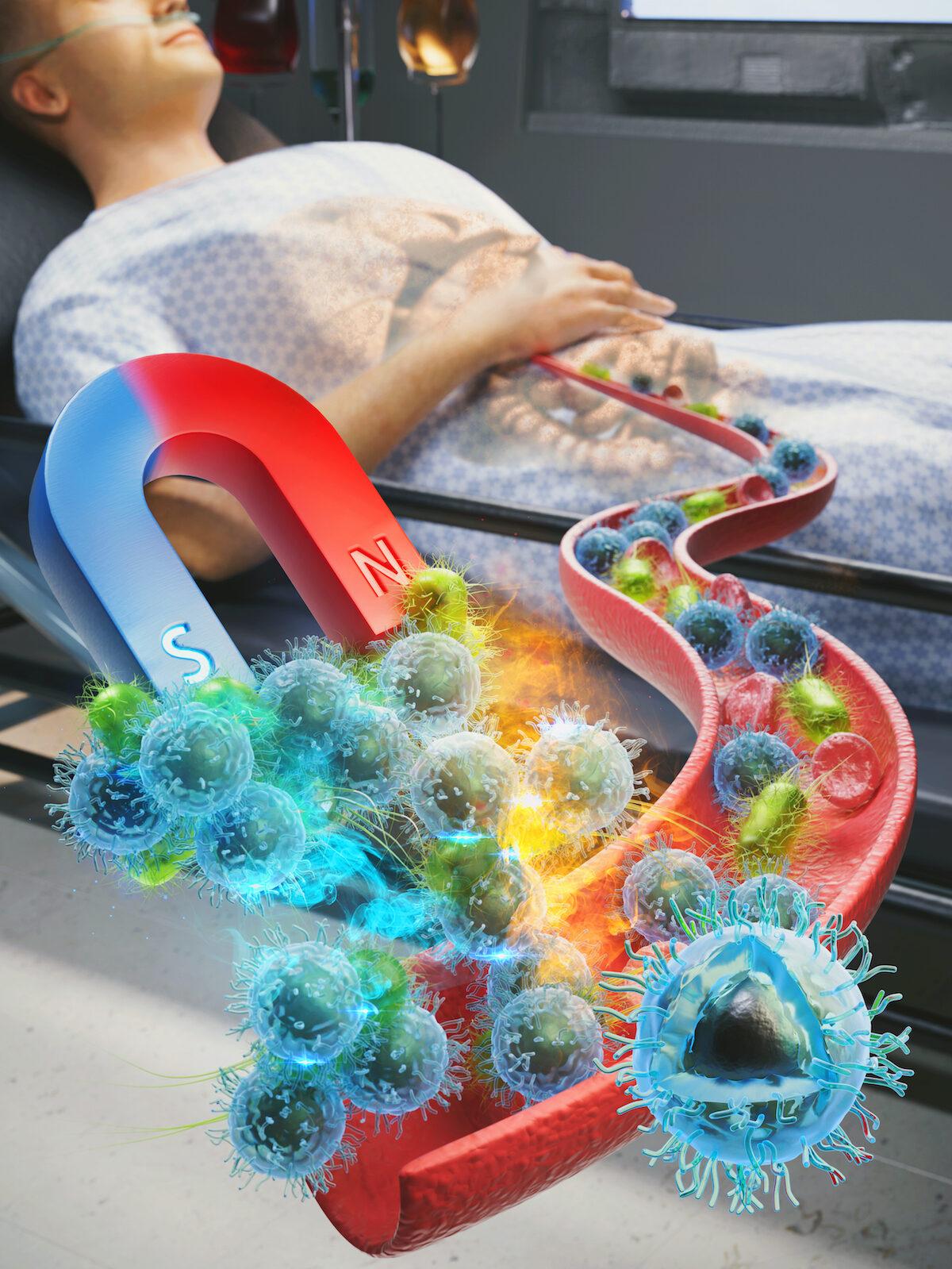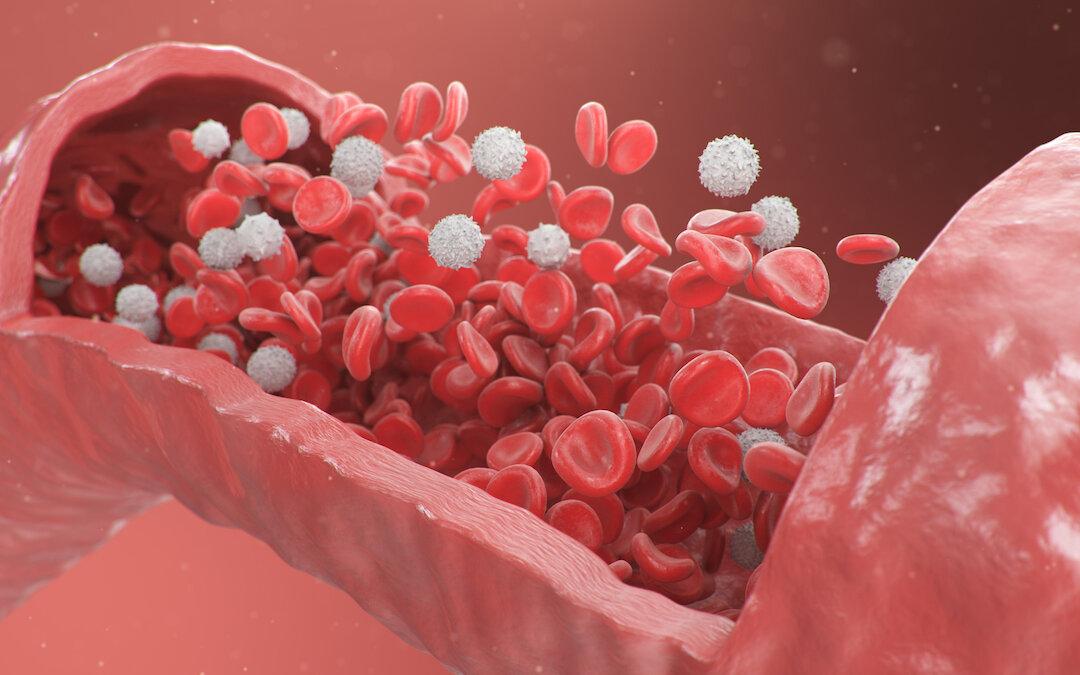A South Korean research team has developed a nanoparticle technology to eliminate viruses and bacteria from the blood of patients. The method is expected to bring new opportunities for treating infectious diseases such as COVID-19. Moreover, the unique approach could be a boon to patients infected with antibiotic-resistant bacteria.

An image showing the principle of blood purification using magnetic nanoparticles camouflaged blood cell membranes. (Courtesy of Ulsan National Institute of Science and Technology (UNIST), South Korea)





